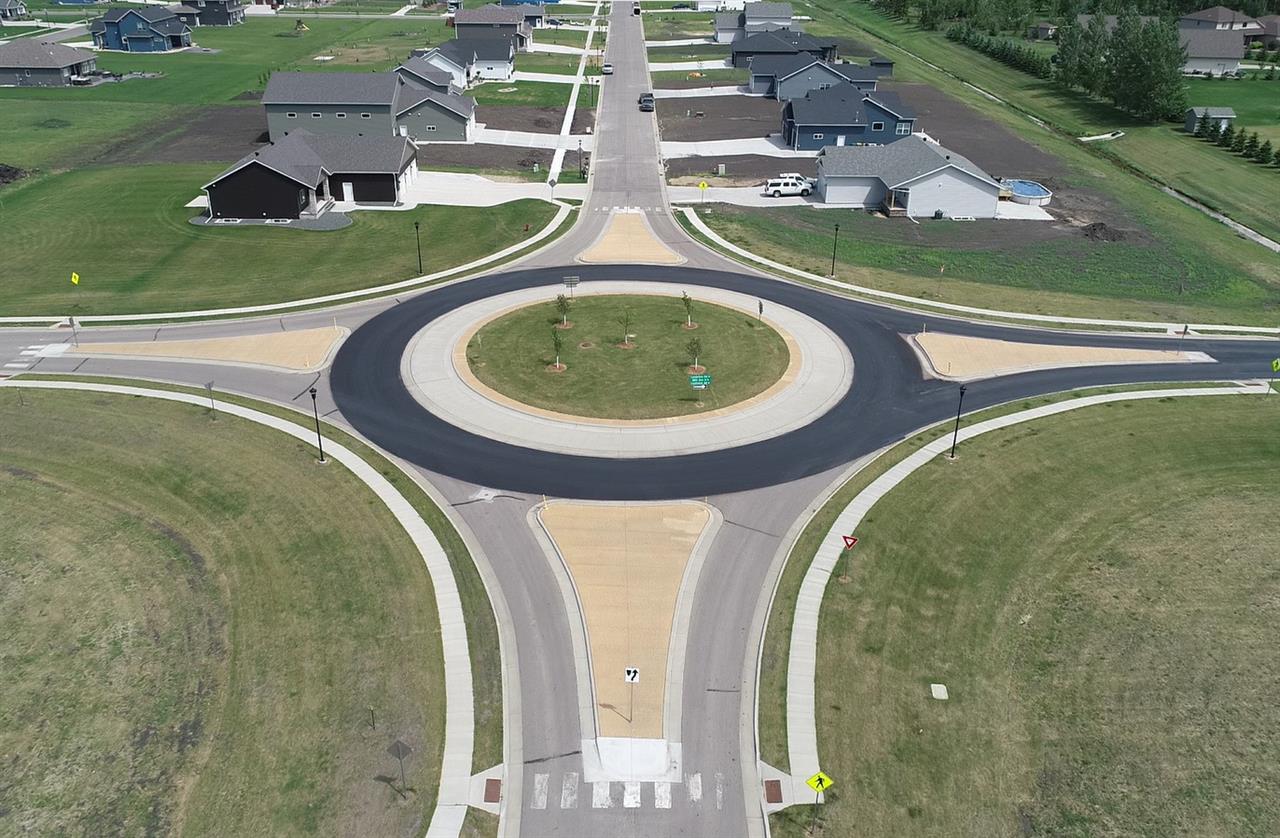< Return to News
All About Roundabouts
 Communities are challenged to deliver transportation systems that allow traffic to flow efficiently and safely. Roundabouts meet the demand of both.
Communities are challenged to deliver transportation systems that allow traffic to flow efficiently and safely. Roundabouts meet the demand of both.
All vehicles entering a roundabout are traveling in the same direction which limits the number of conflict points. A traditional 4-way signalized intersection has 32 conflict points, however a single-lane roundabout only has 8. Further, these collisions are side-swipe crashes rather than “T-bone” crashes. Speed is also reduced while entering a roundabout which leads to more minor collisions and fewer injuries than signalized intersections.
In a roundabout, vehicles aren’t forced to wait based on what the traffic light determines. Vehicles in a roundabout are constantly moving, therefore they can handle more traffic in a given amount of time compared to other types of intersections. It is for these reasons and many more that you have seen and will continue to see roundabouts being constructed in your neighborhood.
While roundabouts have many positive features it is important to point out a few of the negatives as well. Roundabouts require increased space and right-of-way that may not be available. There is also an increased cost associated with their construction. Planning ahead is critical in growing communities as the benefits of roundabouts make the cost worth-while.